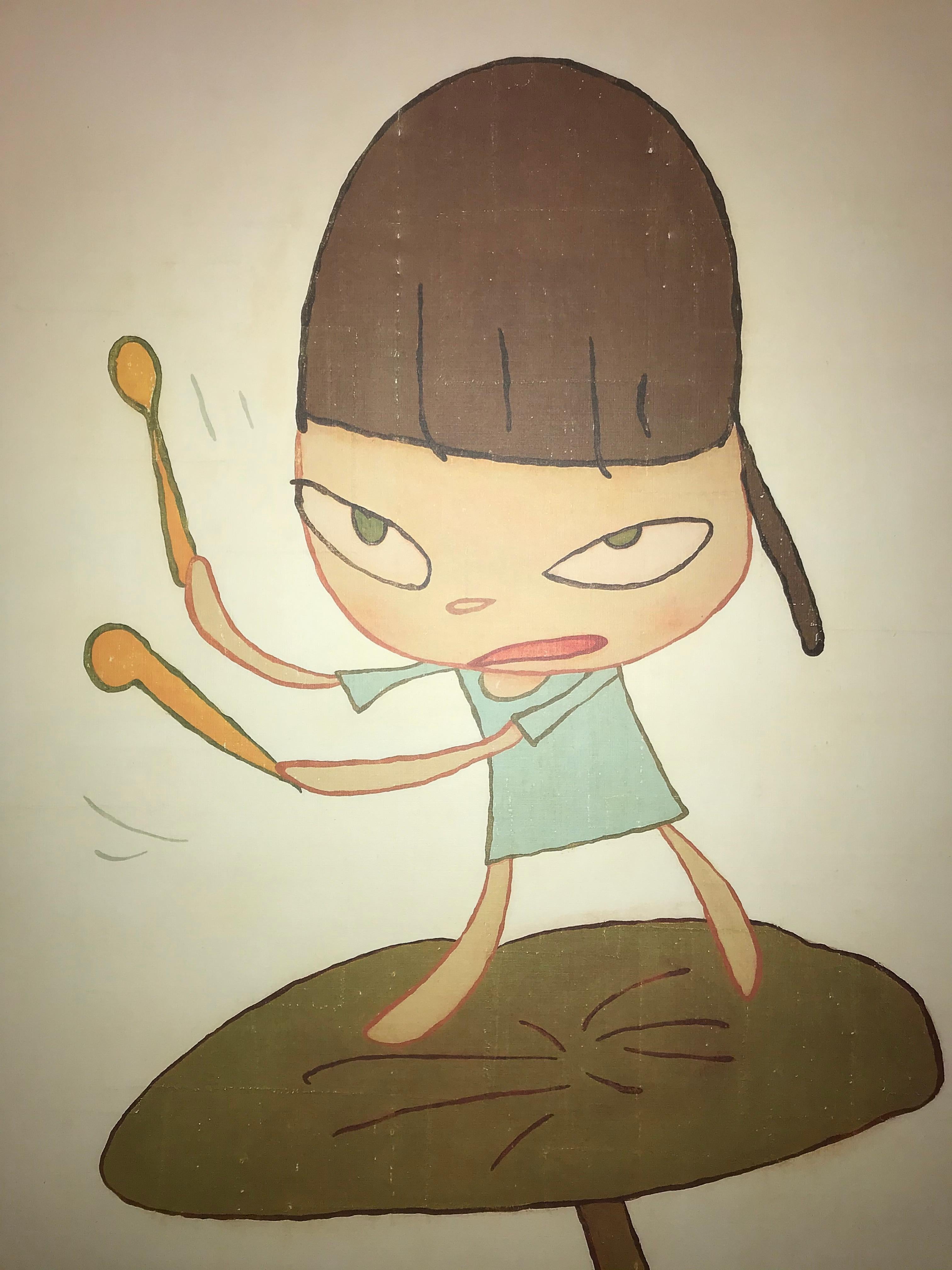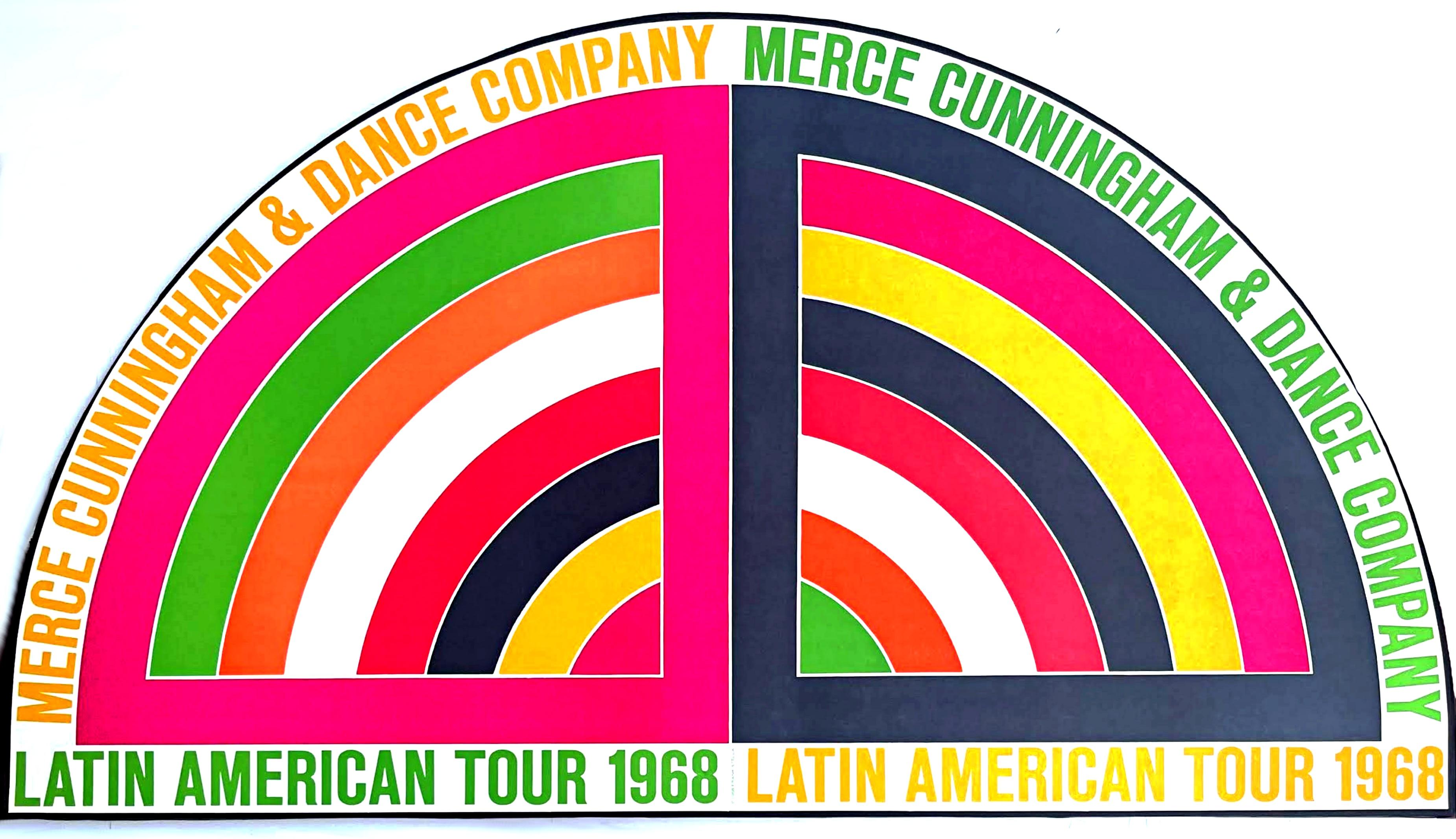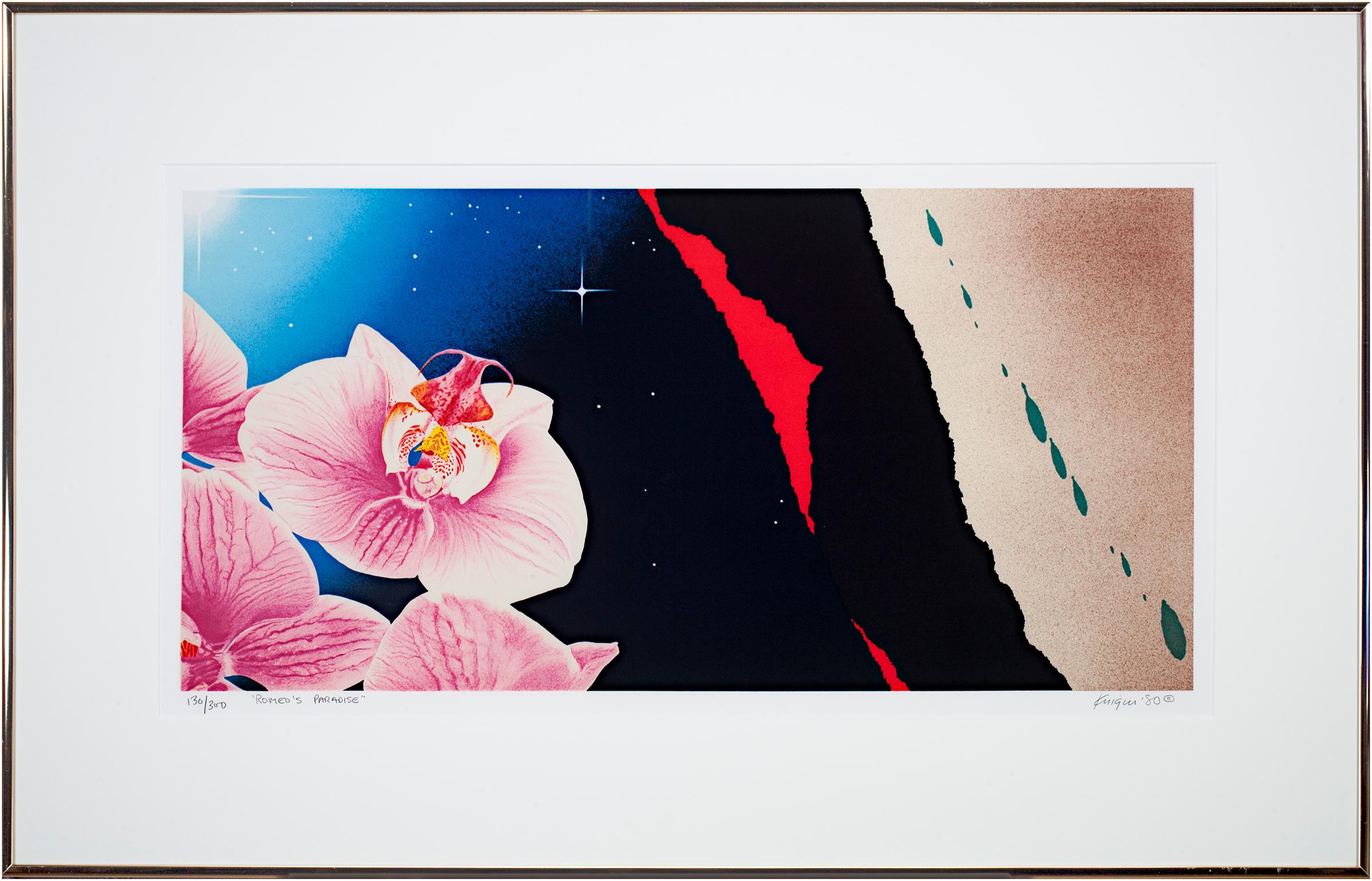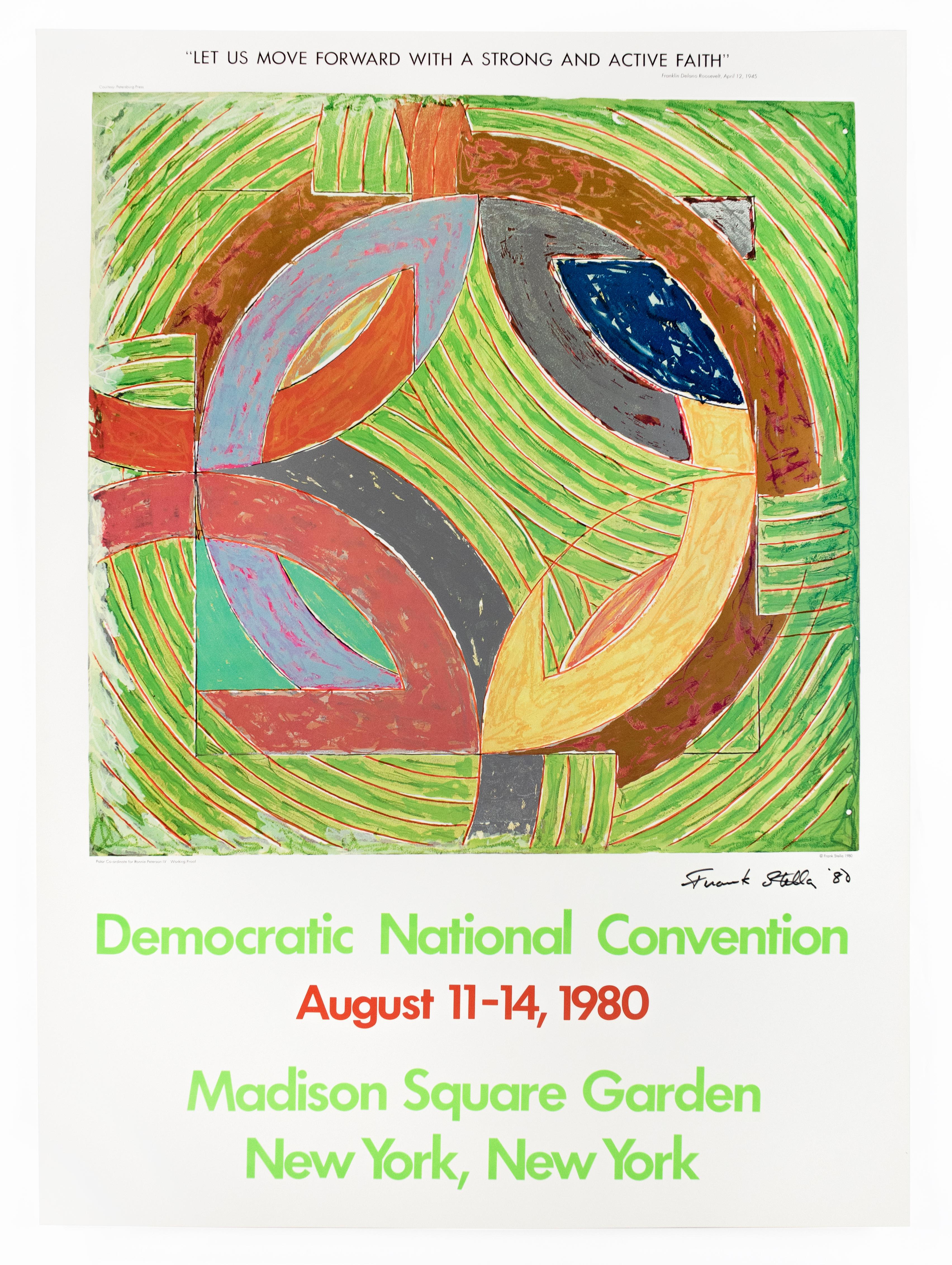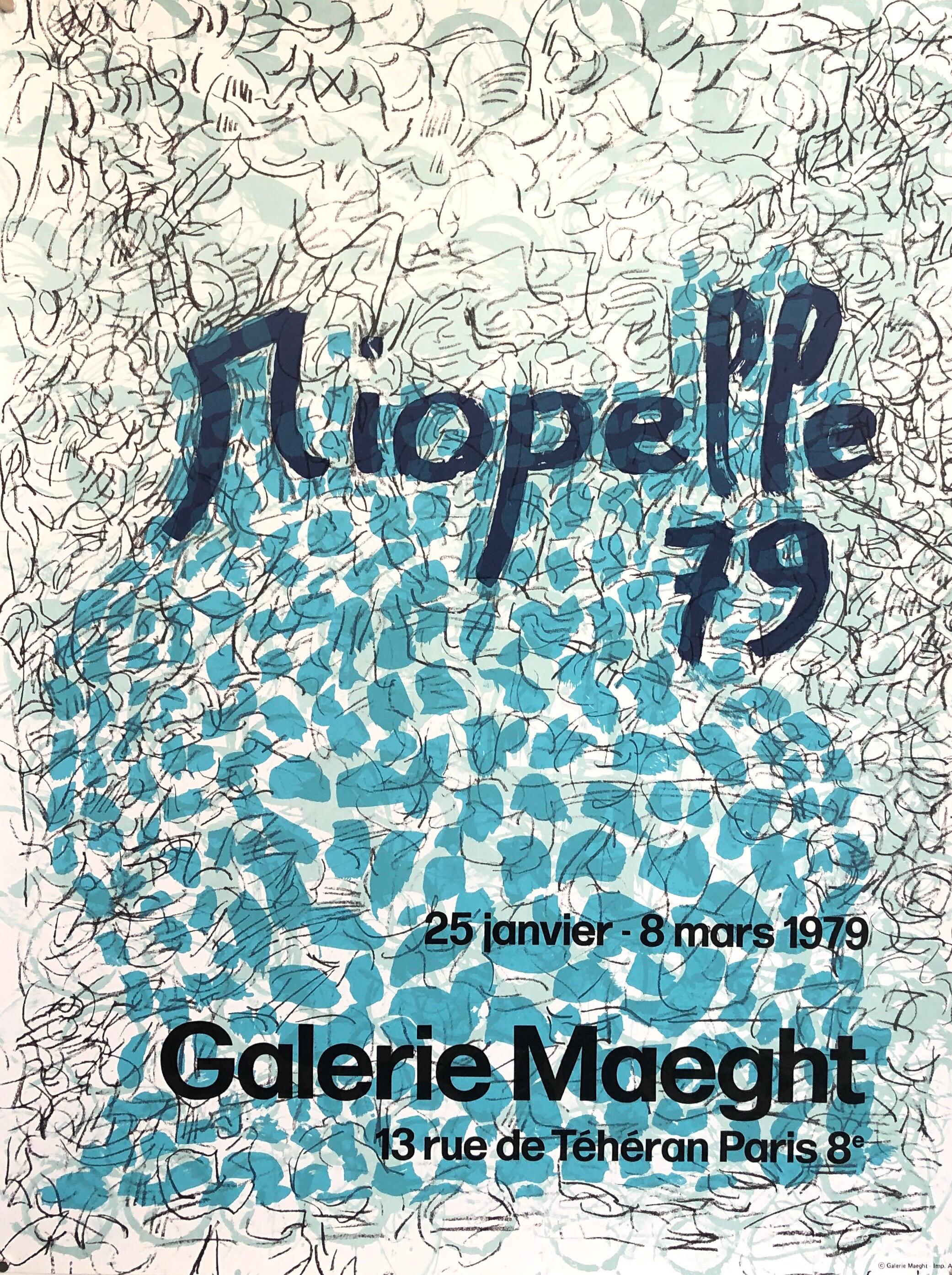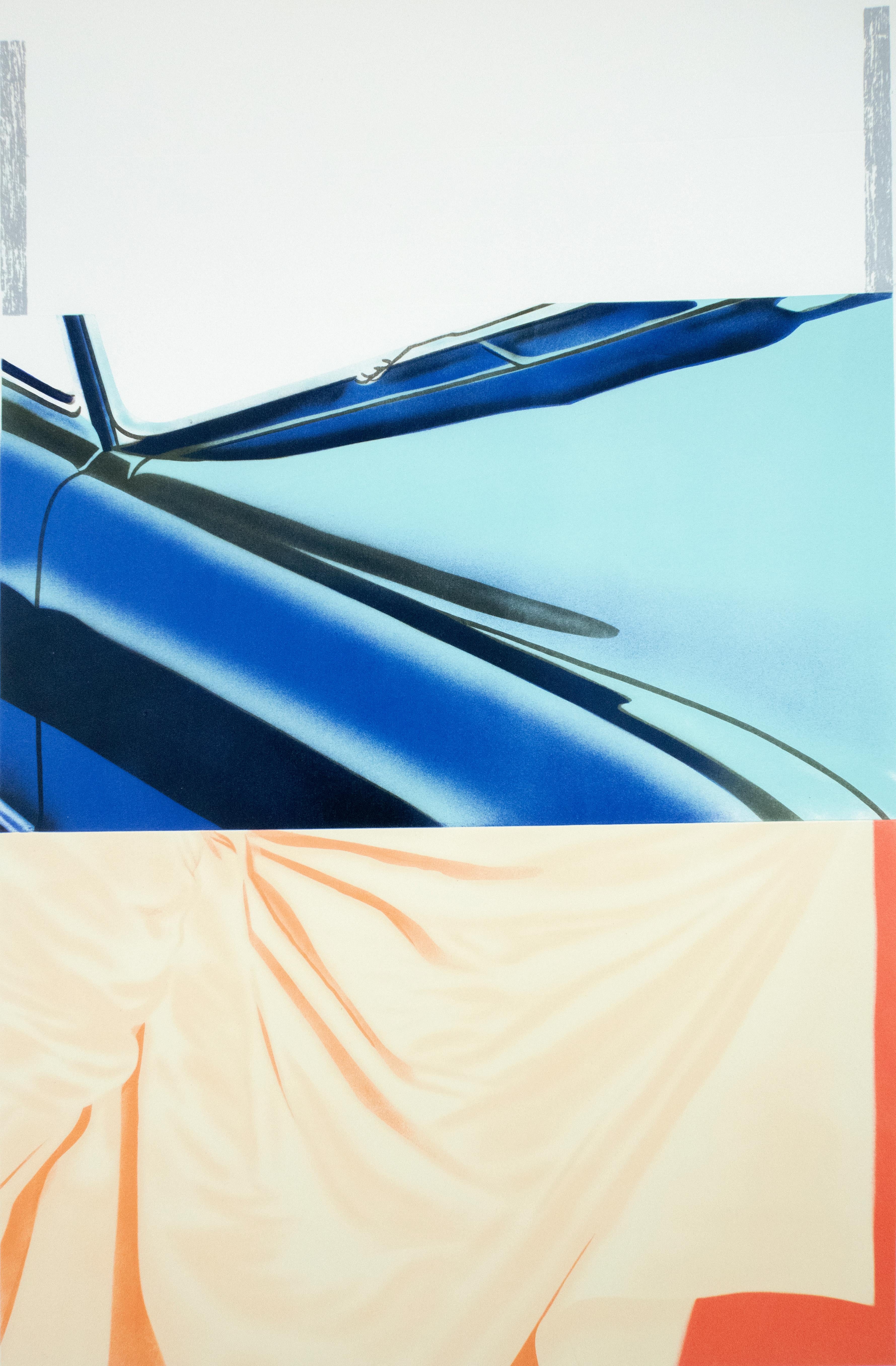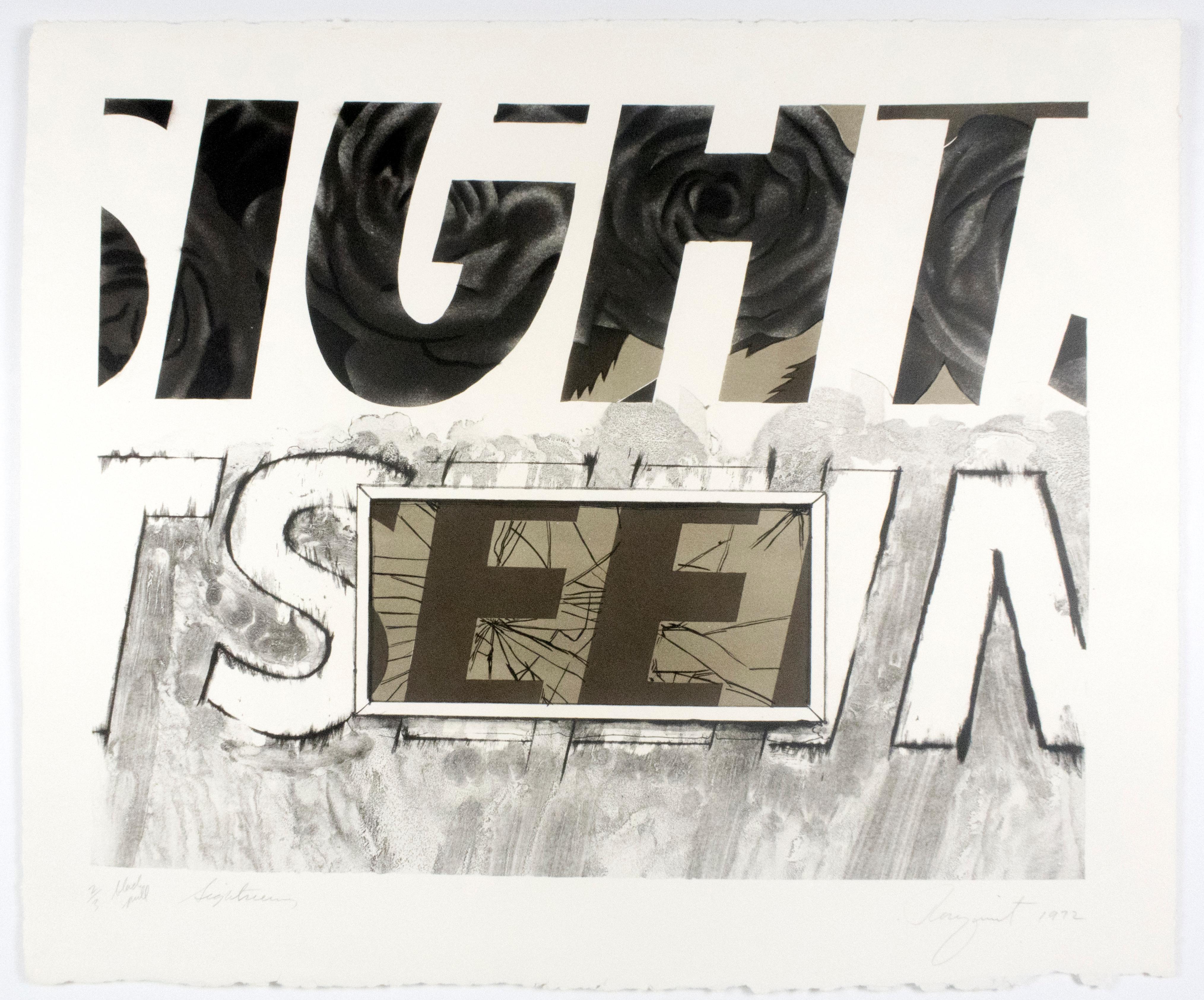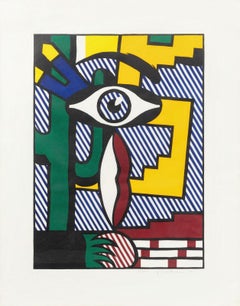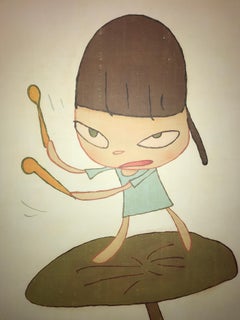
Against Apartheid, Roy Lichtenstein
View Similar Items
Roy LichtensteinAgainst Apartheid, Roy Lichtenstein1983
1983
About the Item
- Creator:Roy Lichtenstein (1923 - 1997, American)
- Creation Year:1983
- Dimensions:Height: 33.5 in (85.09 cm)Width: 23.63 in (60.03 cm)
- Medium:
- Movement & Style:
- Period:
- Condition:
- Gallery Location:New York, NY
- Reference Number:1stDibs: LU5548251442
Roy Lichtenstein
Roy Lichtenstein is one of the principal figures of the American Pop art movement, along with Andy Warhol, James Rosenquist, Claes Oldenburg and Robert Rauschenberg.
Drawing inspiration from comic strips, Lichtenstein appropriated techniques commercial printing in his paintings, introducing a vernacular sensibility to the visual landscape of contemporary art. He employed visual elements such as the halftone dots that comprise a printed image, and a comic-inspired use of primary colors gave his paintings their signature “Pop” palette.
Born and raised in New York City, Lichtenstein enjoyed Manhattan’s myriad cultural offerings and comic books in equal measure. He began painting seriously as a teenager, studying watercolor painting at the Parsons School of Design in the late 1930s, and later at the Art Students League, where he worked with American realist painter Reginald Marsh. He began his undergraduate education at Ohio State University in 1940, and after a three-year stint in the United States Army during World War II, he completed his bachelor’s degree and then his master’s in fine arts. The roots of Lichtenstein’s interest in the convergence of high art and popular culture are evident even in his early years in Cleveland, where in the late 1940s, he taught at Ohio State, designed window displays for a department store and painted his own pieces.
Working at the height of the Abstract Expressionist movement in the 1950s, Lichtenstein deliberately eschewed the sort of painting that was held in high esteem by the art world and chose instead to explore the visual world of print advertising and comics. This gesture of recontextualizing a lowbrow image by importing it into a fine-art context would become a trademark of Lichtenstein’s artistic style, as well as a vehicle for his critique of the concept of good taste. His 1963 painting Whaam! confronts the viewer with an impact scene from a 1962-era issue of DC Comics’ All American Men of War. Isolated from its larger context, this image combines the playful lettering and brightly colored illustration of the original comic with a darker message about military conflict at the height of the Cold War. Crying Girl from the same year featured another of Lichtenstein’s motifs — a woman in distress, depicted with a mixture of drama and deadpan humor. His work gained a wider audience by creating a comic-inspired mural for the New York State Pavilion of the 1964 World's Fair, he went on to be represented by legendary New York gallerist Leo Castelli for 30 years.
In the 1970s and ’80s, Lichtenstein experimented with abstraction and began exploring basic elements of painting, as in this 1989 work Brushstroke Contest. In addition to paintings in which the brushstroke itself became the central subject, in 1984 he created a large-scale sculpture called Brushstrokes in Flight for the Port Columbus International Airport in Ohio. Still Life with Windmill from 1974 and the triptych Cow Going Abstract from 1982 both demonstrate a break from his earlier works where the subjects were derived from existing imagery. Here, Lichtenstein paints subjects more in line with the norms of art history — a pastoral scene and a still life — but he has translated their compositions into his signature graphic style, in which visual elements of printed comics are still a defining feature.
Lichtenstein’s work is represented in the collections of the Metropolitan Museum of Art, the Museum of Modern Art, Tate Modern, and many others. He was awarded National Medal of Arts in 1995, two years before he passed away.
Find a collection of Roy Lichtenstein prints, drawings and more on 1stDibs.
- Bicentennial, by Roy LichtensteinBy Roy LichtensteinLocated in New York, NYIncluded in America: The Third Century portfolio, Roy Lichtenstein created Bicentennial as an original color lithograph with screenprint in 1975, conceived to celebrate the 200th ann...Category
20th Century Pop Art More Prints
MaterialsLithograph, Screen
Price Upon Request - American Indian Theme IIIBy Roy LichtensteinLocated in New York, NYCreated in 1980 by Roy Lichtenstein as part of a portfolio of prints known as The American Indian Theme Series, this original woodcut in colors, is...Category
20th Century Pop Art Abstract Prints
MaterialsWoodcut
Price Upon Request - Ma de Proverbis, Joan MiróBy Joan MiróLocated in New York, NYThis lithograph in colors on Arches paper (with watermark) was created by the artist in 1970. Signed in the stone, (lower right) from the edition of 1000. Available for local pick u...Category
20th Century Surrealist Abstract Prints
MaterialsLithograph
Price Upon Request - Ossipee (from 'Eccentric Polygons')By Frank StellaLocated in New York, NYFrom the artist’s Eccentric Polygons portfolio, created by Frank Stella in 1974, Ossipee is an original color lithograph and screenprint measuring 1...Category
20th Century Abstract Geometric More Prints
MaterialsLithograph, Screen
Price Upon Request - Untitled, Richard DiebenkornBy Richard DiebenkornLocated in New York, NYThis beautiful original six-color lithograph, printed on Arches Cover White paper in 1982, was created by Richard Diebenkorn and is monogrammed by the artist in pencil, dated and num...Category
20th Century Abstract Abstract Prints
MaterialsLithograph
Price Upon Request - Sailor, Speed of LightBy James RosenquistLocated in New York, NYRich, vibrant and powerful, James Rosenquist created Sailor, Speed of Light in 1999 as one of the original lithographs to comprise his famed, Speed of Light portfolio. Hand-signed a...Category
Late 20th Century Abstract Abstract Prints
MaterialsLithograph
Price Upon Request
- The Fan and its Surroundings, from the Global Editions SeriesBy Ed RuschaLocated in London, GBLithograph on Rives BFK paper, torn and deckle edgesCategory
Late 20th Century Pop Art Abstract Prints
MaterialsLithograph
- Marching On A Butterbur Leaf Print 2019 Exclusive Limited Sticker Set Pop ArtBy Yoshitomo NaraLocated in Draper, UTDETAILS: 27 x 17 inches 2020 Offset lithograph 80# Classic Linen Solar White CoverCategory
2010s Pop Art Abstract Prints
MaterialsLithograph
- Original Lithograph Signed Pop Art Floral Abstract Galaxy Space Celestial BrightBy Michael KniginLocated in Milwaukee, WI"Romeo's Paradise" is an original color lithograph by Michael Knigin. The artist signed the piece in the lower right then titled/editioned 130/300 in the lower left with graphite. It...Category
1980s Pop Art More Prints
MaterialsLithograph, Ink
- SIGNED Frank Stella poster 1980 Democratic Convention colorful vintage PopBy Frank StellaLocated in New York, NYColorful vintage poster for the 1980 Democratic National Convention, held in Madison Square Garden in New York.Concentric lines of orange and bright green interweave with strokes of pink, yellow, red, turquoise, silver, and gold. Printed with metallic ink that catches light differently from each angle, complementing the poster’s lime green and red text. The top of the poster reads “Let us move forward with a strong and active faith.” SIGNED by the artist lower right with pen. It was at this 1980 convention that Jimmy Carter was nominated for reelection. This large poster was printed by Petersburg Press...Category
1980s Pop Art Abstract Prints
MaterialsLithograph
- Allied Chemical Tower, Packed, Project for Number 1 Time Square New YorkLocated in San Francisco, CAThis artwork titled ' Allied Chemical Tower, Packed, Project for Number 1 Time Square, New York" 1971, in an original color lithograph on Arjomari paper by renown Bulgarian/American ...Category
Late 20th Century Pop Art Abstract Prints
MaterialsLithograph
- Canadian Post Modern Pop Art Lithograph Vintage Poster Memphis Galerie MaeghtBy Jean-Paul RiopelleLocated in Surfside, FLVintage gallery exhibition poster. The Galerie Maeght is a gallery of modern art in Paris, France, and Barcelona, Catalonia, Spain. The gallery was founded in 1936 in Cannes. The Paris gallery was started in 1946 by Aimé Maeght. The artists exhibited are mainly from France and Spain. Since 1945, the gallery has presented the greatest modern artists such as Matisse, Bonnard, Braque, Miró, and Calder. In 1956, Adrien Maeght opened a new parisian venue. The second generation of “Maeght” artists was born: Bazaine, Andre Derain, Giacometti, Kelly, Raoul Ubac, then Riopelle, Antoni Tapies, Pol Bury and Adami, among others. Jean-Paul Riopelle, CC GOQ (7 October 1923 – 12 March 2002) was a painter and sculptor from Quebec, Canada. He became the first Canadian painter (since James Wilson Morrice) to attain widespread international recognition. Born in Montreal, Riopelle began drawing lessons in 1933 and continued through 1938. He studied engineering, architecture and photography at the école polytechnique in 1941. In 1942 he enrolled at the École des beaux-arts de Montréal but shifted his studies to the less academic école du Meuble, graduating in 1945. He studied under Paul-Émile Borduas in the 1940s and was a member of Les Automatistes movement. Breaking with traditional conventions in 1945 after reading André Breton's Le Surréalisme et la Peinture, he began experimenting with non-objective (or non-representational) painting. He was one of the signers of the Refus global manifesto. In 1947 Riopelle moved to Paris and continued his career as an artist, where, after a brief association with the surrealists (he was the only Canadian to exhibit with them) he capitalized on his image as a "wild Canadian". His first solo exhibition took place in 1949 at the Surrealist meeting place, Galerie La Dragonne in Paris. Riopelle married Françoise Lespérance in 1946; the couple had two daughters but separated in 1953. In 1959 he began a relationship with the American painter Joan Mitchell, Living together throughout the 1960s, they kept separate homes and studios near Giverny, where Monet had lived. They influenced one another greatly, as much intellectually as artistically, but their relationship was a stormy one, fueled by alcohol. The relationship ended in 1979. His 1992 painting Hommage à Rosa Luxemburg is Riopelle's tribute to Mitchell, who died that year, and is regarded as a high point of his later work. Riopelle's style in the 1940s changed quickly from Surrealism to Lyrical Abstraction (related to abstract expressionism), in which he used myriad tumultuous cubes and triangles of multicolored elements, facetted with a palette knife, spatula, or trowel, on often large canvases to create powerful atmospheres. The presence of long filaments of paint in his painting from 1948 through the early 1950s[8] has often been seen as resulting from a dripping technique like that of Jackson Pollock. Rather, the creation of such effects came from the act of throwing, with a palette knife or brush, large quantities of paint onto the stretched canvas. Riopelle's voluminous impasto became just as important as color. His oil painting technique allowed him to paint thick layers, producing peaks and troughs as copious amounts of paint were applied to the surface of the canvas. Riopelle, though, claimed that the heavy impasto was unintentional: "When I begin a painting," he said, "I always hope to complete it in a few strokes, starting with the first colours I daub down anywhere and anyhow. But it never works, so I add more, without realizing it. I have never wanted to paint thickly, paint tubes are much too expensive. But one way or another, the painting has to be done. When I learn how to paint better, I will paint less thickly." When Riopelle started painting, he would attempt to finish the work in one session, preparing all the color he needed before hand: "I would even go as far to say—obviously I don't use a palette, but the idea of a palette or a selection of colors that is not mine makes me uncomfortable, because when I work, I can't waste my time searching for them. It has to work right away." A third element, range of gloss, in addition to color and volume, plays a crucial role in Riopelle's oil paintings. Paints are juxtaposed so that light is reflected off the surface not just in different directions but with varying intensity, depending on the naturally occurring gloss finish (he did not varnish his paintings). These three elements; color, volume, and range of gloss, would form the basis of his oil painting technique throughout his long and prolific career. Riopelle received an Honorable Mention at the 1952 São Paulo Art Biennial. In 1953 he showed at the Younger European Painters exhibition at the Solomon R. Guggenheim Museum in New York City. The following year Riopelle began exhibiting at the Pierre Matisse Gallery in New York. In 1954, works by Riopelle, along with those of B. C. Binning and Paul-Émile Borduas represented Canada at the Venice Biennale. He was the sole artist representing Canada at the 1962 Venice Biennale in an exhibit curated by Charles Comfort...Category
1970s Pop Art Abstract Prints
MaterialsLithograph, Offset


